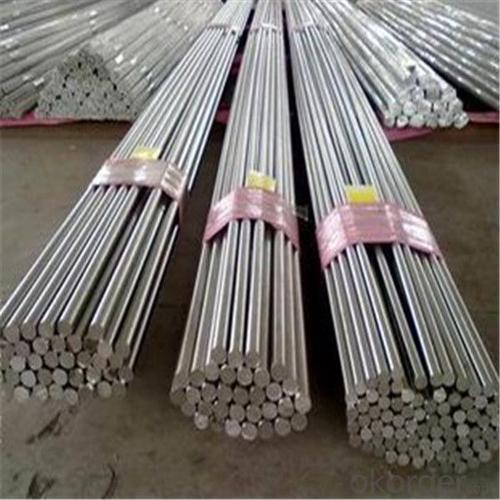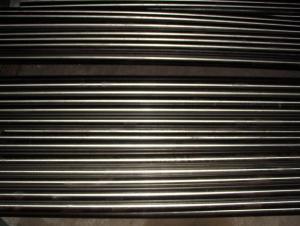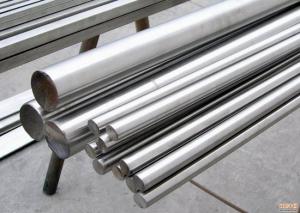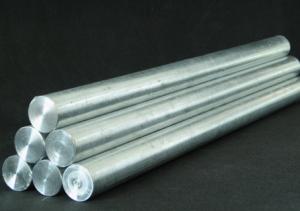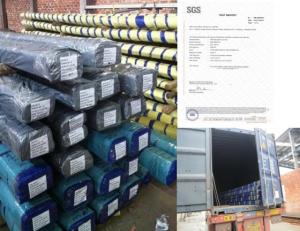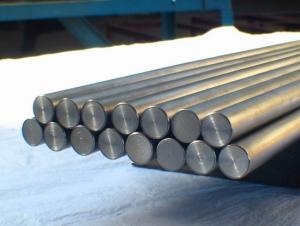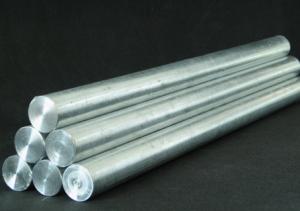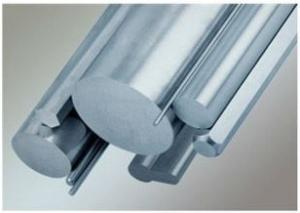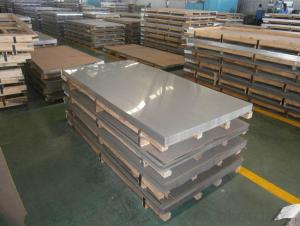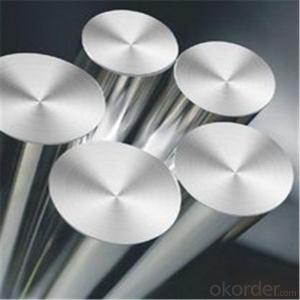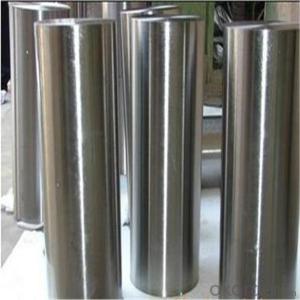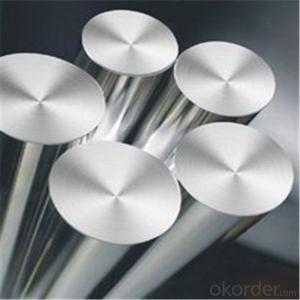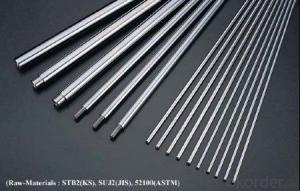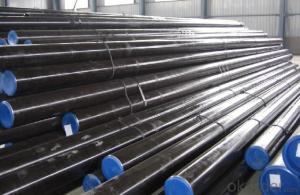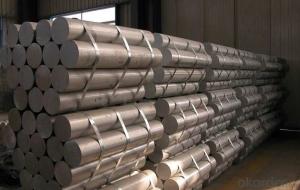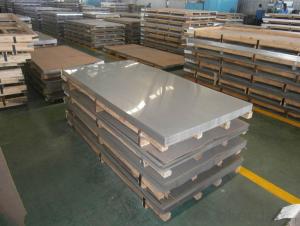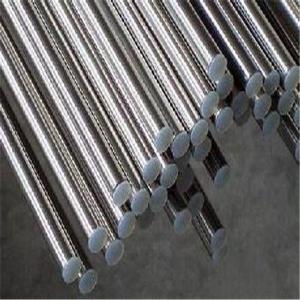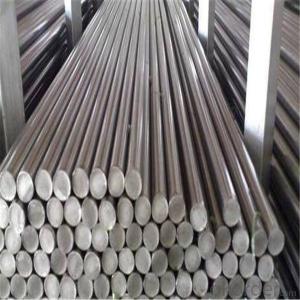aisi 430 Stainless Steel Round Bar Price per kg
- Loading Port:
- Shanghai
- Payment Terms:
- TT OR LC
- Min Order Qty:
- 2 m.t.
- Supply Capability:
- 20000 m.t./month
OKorder Service Pledge
OKorder Financial Service
You Might Also Like
Specification
1.Specifications
stainless steel round bar
Name |
aisi 430 stainless steel round bar price per kg | |
Standard | ASTM A276, A484, A479, A580, A582, JIS G4303, JIS G4311, DIN 1654-5,DIN 17440,GB/T 1220 | |
Material | 304,304L,309S,310S,316,316L,316Ti,317,317L,321,201, 202,410,420,430,etc | |
Type | Round,square,hexagonal,flat,angle | |
Surface | Pickled,Black,Bright,Polishing,Blasting,etc | |
Specifications | Round bar | Diameter: 3mm~800mm |
Angle bar | Size: 3mm*20mm*20mm~12mm*100mm*100mm | |
Square bar | Size: 4mm*4mm~100mm*100mm | |
Flat bar | Thickness: 2mm~100mm | |
Width: 10mm~500mm | ||
Hexagonal | Size: 2mm~100mm | |
Length | 6m,5.8m,12m or as required | |
Price Term | EX-Work, FOB, CFR, CIF,CNF | |
Payment Term | T/T,L/C | |
Package | Bundled,wooden box for export standard package. | |
Delivery Time | Normally according to the order quantity | |
2.Package
1. waterproofing membrane
2.wooden case


- Q: Are stainless steel bars suitable for the production of heat sinks?
- Indeed, heat sinks can be produced with the use of stainless steel bars. The remarkable heat transfer properties, superior thermal conductivity, and resistance to corrosion are well-known features of stainless steel. Consequently, it has become a favored material for the manufacturing of heat sinks. The ability to effortlessly shape and size stainless steel bars enables the tailoring of heat sinks to fulfill precise specifications. Moreover, stainless steel guarantees the durability and dependability of heat sinks, as they effectively disperse heat over an extended period of time.
- Q: Are stainless steel bars resistant to impact?
- Stainless steel bars exhibit a remarkable resistance to impact, as they possess exceptional toughness and can endure significant forces without succumbing to deformation or fracture. This outstanding performance is attributed to the distinctive amalgamation of strength, ductility, and elasticity inherent in stainless steel. Consequently, stainless steel bars are commonly employed in sectors where impact resistance holds paramount importance, such as construction, automotive, and aerospace industries. Moreover, these bars possess the capability to absorb energy from impacts, rendering them a dependable option for safety-oriented applications. Nevertheless, it is vital to acknowledge that the impact resistance of stainless steel bars may fluctuate depending on the specific alloy and heat treatment employed.
- Q: Do stainless steel bars require any protective coatings?
- No, stainless steel bars do not require any protective coatings as they are naturally corrosion-resistant due to the presence of chromium.
- Q: What is the maximum temperature stainless steel bars can withstand?
- The specific grade of stainless steel being used determines the maximum temperature it can withstand. In general, stainless steel is highly resistant to high temperatures, making it suitable for a wide range of applications. Stainless steel grades 304 and 316, which are the most common, can typically handle temperatures up to 1500°F (815°C) before their mechanical properties begin to deteriorate. However, there are specialized stainless steels like 309 and 310 that can withstand even higher temperatures, reaching up to 2100°F (1150°C). To determine the maximum temperature limits for specific stainless steel grades and bar sizes, it is important to refer to the manufacturer's specifications or seek professional advice, as they can vary based on the composition and manufacturing processes.
- Q: Are stainless steel bars suitable for high-magnetic fields?
- No, stainless steel bars are not suitable for high-magnetic fields as they have low magnetic permeability and can get easily magnetized, affecting their structural integrity and performance.
- Q: What are stainless steel bars?
- Stainless steel bars are solid metal rods made from stainless steel, a corrosion-resistant and durable alloy composed primarily of iron, chromium, and other elements. These bars are widely used in various industries, including construction, manufacturing, and engineering, for their high strength, excellent resistance to corrosion, and versatility in different applications. They come in various shapes and sizes, such as round, square, or flat bars, and are commonly used in the production of components, machinery, tools, and structures that require strength and resistance to environmental factors.
- Q: What are the common finishes available for stainless steel bars?
- Some common finishes available for stainless steel bars include mill finish, brushed finish, mirror finish, and satin finish.
- Q: How are stainless steel bars made?
- Stainless steel bars are made through a process called hot rolling, where large billets of stainless steel are heated and passed through a series of rolling mills to gradually reduce their thickness and shape them into long, straight bars. This process helps to enhance the strength, durability, and corrosion resistance of the stainless steel.
- Q: What are the different types of stainless steel bar surfaces?
- There are several different types of stainless steel bar surfaces, including mill finish, brushed finish, mirror finish, and satin finish.
- Q: What are the different types of corrosion that stainless steel bars can withstand?
- Stainless steel bars are known for their exceptional resistance to corrosion, which is why they are widely used in various industries. There are several different types of corrosion that stainless steel bars can withstand, including: 1. Uniform corrosion: This is the most common type of corrosion, where the entire surface of the stainless steel bar corrodes evenly. However, stainless steel contains a minimum of 10.5% chromium, which forms a protective oxide layer on the surface, preventing uniform corrosion from occurring. 2. Pitting corrosion: Pitting corrosion is localized corrosion that results in the formation of small pits or holes on the surface of the stainless steel bar. Stainless steel's high chromium content and passivity help protect against pitting corrosion, making it highly resistant to this type of corrosion. 3. Crevice corrosion: Crevice corrosion occurs in confined spaces, such as gaps, joints, or crevices, where oxygen is limited. Stainless steel bars are resistant to crevice corrosion due to their self-passivating nature, which ensures that the passive oxide layer continues to protect the metal surface even in these confined areas. 4. Intergranular corrosion: Intergranular corrosion happens along the grain boundaries of stainless steel, resulting in the weakening of the material. However, stainless steel bars are usually manufactured with low carbon content, which helps prevent intergranular corrosion by minimizing the formation of chromium carbides along the grain boundaries. 5. Stress corrosion cracking: Stress corrosion cracking is a type of corrosion that occurs under the combined influence of tensile stress and a specific corrosive environment. Stainless steel bars have excellent resistance to stress corrosion cracking, especially in chloride-rich environments, making them suitable for applications in harsh conditions. It is important to note that while stainless steel bars are highly resistant to corrosion, their resistance can vary depending on the specific grade and the corrosive environment they are exposed to. Therefore, it is crucial to select the appropriate stainless steel grade for a given application to ensure maximum corrosion resistance.
Send your message to us
aisi 430 Stainless Steel Round Bar Price per kg
- Loading Port:
- Shanghai
- Payment Terms:
- TT OR LC
- Min Order Qty:
- 2 m.t.
- Supply Capability:
- 20000 m.t./month
OKorder Service Pledge
OKorder Financial Service
Similar products
Hot products
Hot Searches
Related keywords


